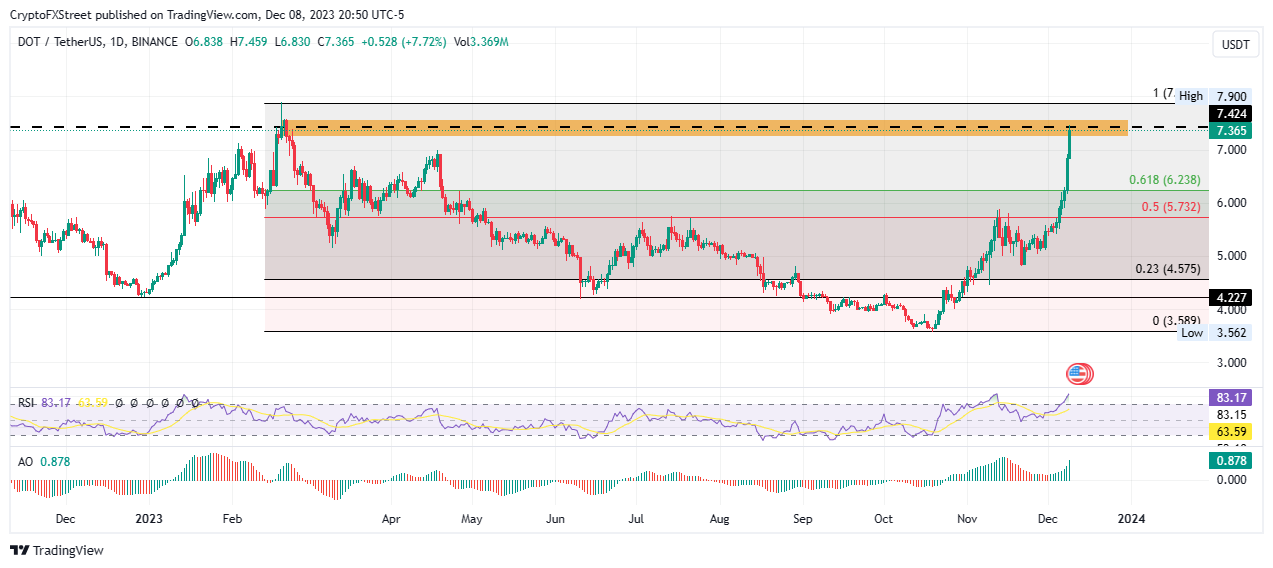- Polkadot price is up 80% since October 18 when the crypto market turned bullish.
- DOT risks a 5% correction, or worse if it fails to overcome the supply barrier extending from $7.236 to $7.575.
- Invalidation of the bearish outlook will occur upon a decisive candlestick close above the mean threshold at $7.424, bringing $7.900 to focus.
Polkadot (DOT) price is among the biggest gainers since the market turned bullish around October 18, recording a significant climb as traders and investors shelved their profit-booking appetite. However, all things could go brrrr now that the price confronts a formidable supplier congestion zone.
Also Read: Polkadot Price Forecast: A correction or second coming for DOT holders?
Polkadot risks a 5% correction but the bulls are still in play
Polkadot (DOT) price is up 80% since October 18, but now confronts a supply zone stretching from $ 7.236 to $.575. To confirm the continuation of the intermediate trend, the price must record a daily candlestick close above the mean threshold of this order block above $7.424.
The Relative Strength Index (RSI) shows DOT is already massively overbought, at 83, but its trajectory or orientation to the north suggests buying momentum continues to rise. Similarly, the histogram bars of the Awesome Oscillator (AO) remain in the positive territory with large green volumes, solidifying the presence of the bulls in the DOT market.
Increased buying pressure could see Polkadot price overcome the $7.424 roadblock, flipping the supply zone into a bullish breaker by retesting the $7.900 range high. Notably, this level was last tested on February 19. Such a move would constitute a 7% climb above current levels.
DOT/USDT 1-day chart
On the flip side, if the supply barrier holds as a resistance block, Polkadot price could face a rejection, retracting 5% to the $7.000 psychological or worse, retracing the most important Fibonacci level, 61.8%, at $6.238. In the dire case, the slump could extend to the 50% Fibonacci retracement level at$5.732. Such a move would constitute a 20% correction.
Source
